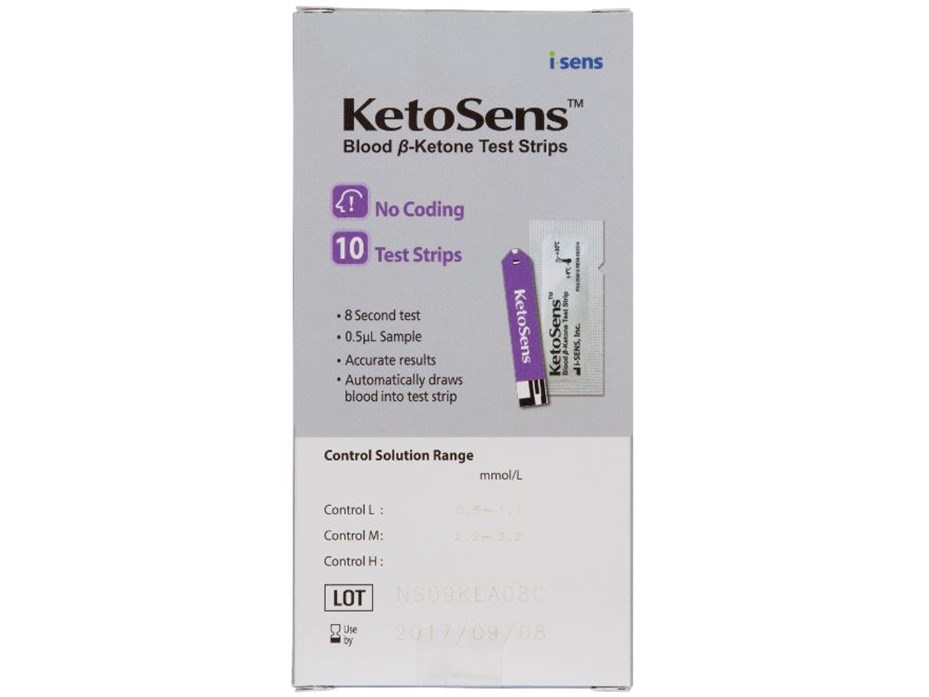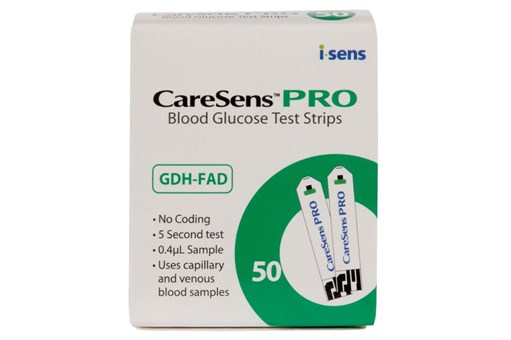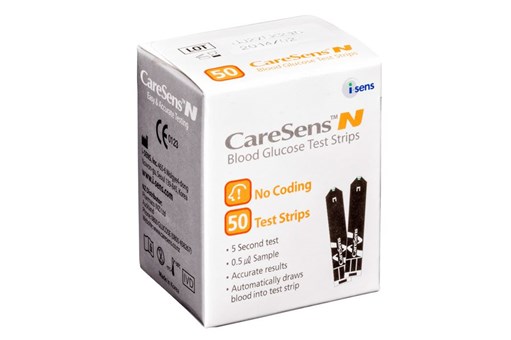KetoSens - Blood Ketone Test Strips
PI640361
$25
inc gst
Product overview
KetoSens test strips is a no coding blood ketone test strips for use only with CareSens Dual meters. KetoSens test strips come in individually wrapped foil pack of 10 test strips.
HOW TO USE
KetoSens test strips don’t need manual coding and are designed to work with the CareSens Dual meters for blood ketone testing.
- PREPARING THE LANCING DEVICE
- Unscrew and remove the adjustable tip.
- Insert a new disposable lancet firmly into the carrier.
- Twist off and set aside the protective cover of the disposable lancet and replace the adjustable tip.
- Set the depth of penetration that you want to use; in thicker skin areas use a higher number; in thin sensitive skin areas use a lower number. Rotate the top portion of the adjustable tip until the setting number matches the arrow.
- Cock the lancing device by pulling on the sleeve until the device clicks.
- PREPARING THE METER AND TEST STRIP
- Wash your hands and the site from which the blood will be drawn.
- Gently insert the square end of the test strip into the meter port with its contact bars facing upwards. The (strip with blood drop) symbol should appear on the screen.
- Get a blood sample using your lancing device (see instructions above).
- Touch the pointed tip of the strip into the blood droplet on your finger, keeping the test strip vertical to the blood droplet, making sure the blood fills up the small window on the black side of the strip. Note: You only need about 0.5μl of blood (about the size of a pinhead).
- Once the blood sample has filled the confirmation window, the meter will beep. If the blood sample has insufficient volume, an error message will appear.
- The test result will appear after the meter counts down from 8 to 1. The result will automatically be stored in the meter’s memory.
Note: the test strip must be inserted into your meter before applying blood to the pointed end. The meter does not require any manual coding. KetoSens blood ketone test strips are for use only in CareSens Dual meters. The meter will switch off if the blood sample is not applied within 2 minutes of inserting the test strip into the meter.



